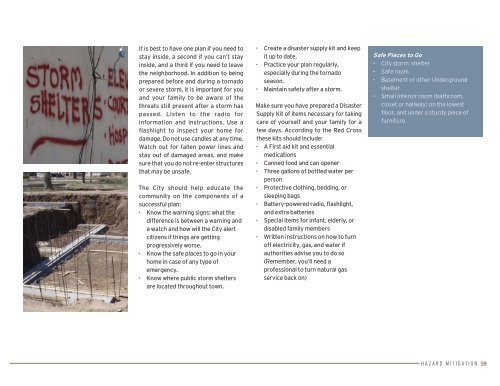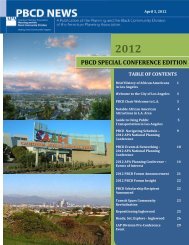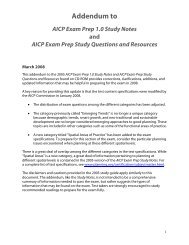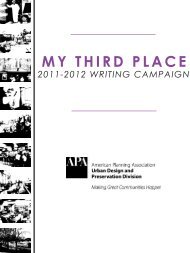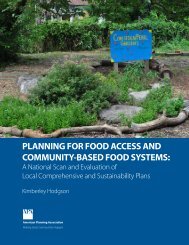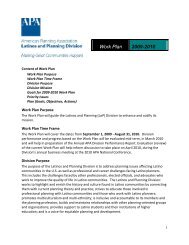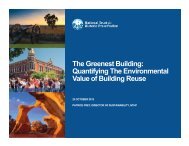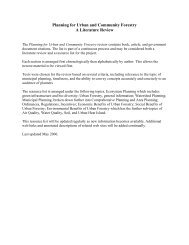Greensburg - American Planning Association
Greensburg - American Planning Association
Greensburg - American Planning Association
You also want an ePaper? Increase the reach of your titles
YUMPU automatically turns print PDFs into web optimized ePapers that Google loves.
It is best to have one plan if you need to<br />
stay inside, a second if you can’t stay<br />
inside, and a third if you need to leave<br />
the neighborhood. In addition to being<br />
prepared before and during a tornado<br />
or severe storm, it is important for you<br />
and your family to be aware of the<br />
threats still present after a storm has<br />
passed. Listen to the radio for<br />
information and instructions. Use a<br />
flashlight to inspect your home for<br />
damage. Do not use candles at any time.<br />
Watch out for fallen power lines and<br />
stay out of damaged areas, and make<br />
sure that you do not re-enter structures<br />
that may be unsafe.<br />
The City should help educate the<br />
community on the components of a<br />
successful plan:<br />
• Know the warning signs: what the<br />
difference is between a warning and<br />
a watch and how will the City alert<br />
citizens if things are getting<br />
progressively worse.<br />
• Know the safe places to go in your<br />
home in case of any type of<br />
emergency.<br />
• Know where public storm shelters<br />
are located throughout town.<br />
• Create a disaster supply kit and keep<br />
it up to date.<br />
• Practice your plan regularly,<br />
especially during the tornado<br />
season.<br />
• Maintain safety after a storm.<br />
Make sure you have prepared a Disaster<br />
Supply Kit of items necessary for taking<br />
care of yourself and your family for a<br />
few days. According to the Red Cross<br />
these kits should include:<br />
• A First aid kit and essential<br />
medications<br />
• Canned food and can opener<br />
• Three gallons of bottled water per<br />
person<br />
• Protective clothing, bedding, or<br />
sleeping bags<br />
• Battery-powered radio, flashlight,<br />
and extra batteries<br />
• Special items for infant, elderly, or<br />
disabled family members<br />
• Written instructions on how to turn<br />
off electricity, gas, and water if<br />
authorities advise you to do so<br />
(Remember, you’ll need a<br />
professional to turn natural gas<br />
service back on)<br />
Safe Places to Go<br />
• City storm shelter<br />
• Safe room<br />
• Basement or other Underground<br />
shelter<br />
• Small interior room (bathroom,<br />
closet or hallway) on the lowest<br />
floor, and under a sturdy piece of<br />
furniture.<br />
hazard mitigation 59


